 klaus-michael schneider
klaus-michael schneider
Keywords: education |
Links: FOTW homepage | search | disclaimer and copyright | write us | mirrors

Last modified: 2021-08-26 by  klaus-michael schneider
klaus-michael schneider
Keywords: education |
Links: FOTW homepage |
search |
disclaimer and copyright |
write us |
mirrors
See Also:
Other Institutions:
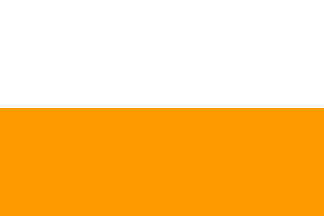 image by Ivan Sache, 19 October 2018
image by Ivan Sache, 19 October 2018
Escuela Normal Superior de Ubaté (ENSU) was established in August 1962. The
school remained exclusively feminine until 1972. ENSU is composed of five seats:
Central, Rural Viento Libre, Rural Seños y Fantasias, Jardin Infantil, Santa
Helena.
The flag of ENSU is horizontally divided white-orange. White is a
symbol of purity, honesty and neutrality of the teachers. Orange is the symbol
of valor, power and joy as requirements of pedagogic activity.
http://muanusofigaby.blogspot.com/2016/04/escuela-normal-superior-de-ubate.html
Manualidades con Karen y Gaby blog
Ivan Sache, 19 October 2018
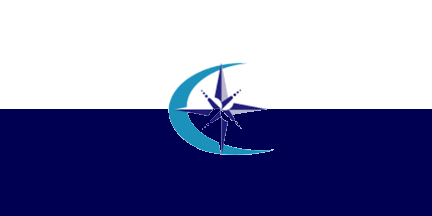 image by Ivan Sache, 28 July 2018
image by Ivan Sache, 28 July 2018
Cibercolegio U.C.N.® was established in Santa Rosa de Osos (Antioquia) by
Provincial Resolution No. 5,778, adopted on 20 June 2003. In 2006, the institute
educated more than 3,700 students from 18 municipalities (Andes, Angelópolis,
Bagre, Briceño, Cáceres, Campamento, Donmatías, Entrerríos, Salgar, San José,
Santa Rosa, Segovia, Sopetrán, Támesis, Tarazá, Valparaíso, Yarumal, and
Zaragoza).
http://www.cibercolegioucn.edu.co/
Cibercolegio U.C.N.® website
The flag of Cibercolegio U.C.N.® is horizontally divided white-dark blue with
the institutional symbol of UCN in the center. The colors reflect the Marian
character of the institute and its diocese of origin.
The institutional
symbol is composed of a wind-rose signalling North. It symbolizes the
geographical location of the university and the straightforwardness of its
strategic management, of its vocation and of its commitment to future. The
placement of the star and the discontinuity of the lines highlight potentiality,
movement and perpetual change. "C" is the initial of "Catholic", meaning on one
hand, universality proper to any university, and, on the other hand, the
ecclesiastic origin of the institute and its philosophy of life.
Manual
de Convivencia
http://www.cibercolegioucn.edu.co/Documents/manual_convivencia.pdf
Ivan Sache,
28 July 2018
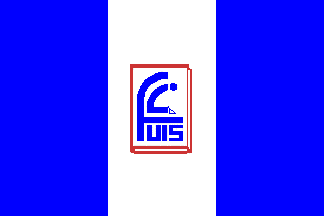 image by Ivan Sache, 10 January 2004
image by Ivan Sache, 10 January 2004
The College was founded in 1970 in Santander. Its flag is
vertically divided blue-white-blue with the emblem of the FUIS in
the middle. The emblem is made of a white book with a red border,
on which is placed the logo of the FUIS in blue. The logo is
based on the letters FUIS and shows a student bent over his work.
Source:
www.voluntad.com.co,
located by Dov Gutterman.
Ivan Sache, 10 January 2004
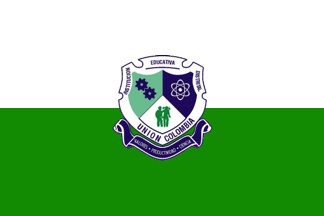 image by Ivan Sache, 13 October 2018
image by Ivan Sache, 13 October 2018
Colegio Unión Colombia was established in 2002 in Bogotá as the merger of
Escuela Santa Claudia and Escuela Nacional Piloto de Aplicación.
The flag
of Colegio Unión Colombia is horizontally divided white-green with the school's
coat of arms in the center.
http://www.colegiounioncolombia.com/Nuestra-Instituci%c3%b3n.php
Ivan Sache, 13 October 2018
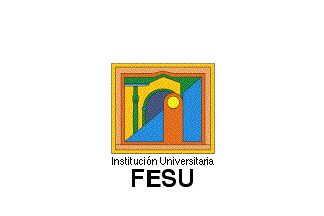 image by Ivan Sache, 01 December 2014
image by Ivan Sache, 01 December 2014
Fundación de Estudios Superiores Universitarios de Urabá (FESU) was
established in Apartadó (Antioquia Department) by Resolution No. 596
of 2 April 2001. The institute is named for Dr. Antonio Roldán
Betancur, one of the founders of EDUCOOP, a cooperative for education
in the Urabá region established in 1976.
The Urabá region is located around the gulf of the same name, on the
border with Panamá.
The flag of FESU is white with the institute's emblem, beneath the
writing "Institución Universitaria / FESU" in black letters.
The emblem of the institute uses warm colours, representing the
regional intense activity, movement, and social dynamics.
A sun is placed in the center as the focal point of the emblem; its
circular shape refers to infinity and perfection. The sun has always
been associated with wealth, splendour and light.
The sun is inscribed in a door, which symbolizes the man facing the
world and the future.
In the background, a second door is framed with classical elements.
Ancient Greece and Rome are the origin of democratic knowledge and of
academics. That door is the distinctive element of the educational
institute. Men and women face the new advance of the university in the
world.
The blue triangle in the background represents the immensity of the
sea and increases the idea of eternity and complexity of the sea; it
conveys the idea of port.
Source: http://www.fesu.edu.co/institucion.html
- FESU website
Ivan Sache, 01 December 2014
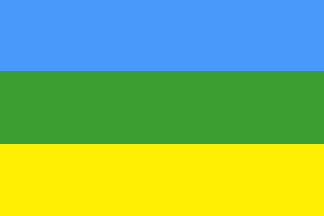 image by Ivan Sache, 12 December 2020
image by Ivan Sache, 12 December 2020
Escuela Normal Superior de Urabá is based in Turbo. Its flag, most probably
based on the municipal flag, is horizontally divided blue-green-yellow.
The three stripes of equal dimensions highlight integrity and balance in the
pedagogic and cultural education.
Blue is a symbol of the sea that bathes the
Gulf of Urabá, the region's pride.
Green represents the beautiful vegetation,
a latent hope for the future of Urabá and a source of hope for people.
Yellow
represents the power of the sun rays over fertile land.
https://sites.google.com/a/turboeducado.edu.co/normal/manual-de-convivencia-1
Escuela Normal Superior de Urabá, Manual de Convivencia
Ivan Sache, 12 December 2020
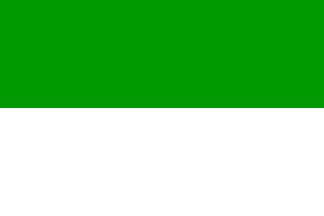 image by Ivan Sache, 20 November 2014
image by Ivan Sache, 20 November 2014
Escuela Vocacional Agrícola was established in Urumita (La Guajira
Department) by Decree No. 80 of 26 May 1960. Institución Educativa Agropecuaria
was eventually established as the merger of Instituto Agrícola, Escuela 14 de
Junio, Jardín infantil Mi Nuevo Hogar and Centro Educativo Domingo Sabio.
The flag of the institute is horizontally divided green-white.
Source:
http://www.ieagropecuariadeurumita.edu.co/index.php?option=com_content&view=article&id=20:nuestros-simbolos&catid=25:institucion&Itemid=65
- Institute's website
Ivan Sache, 20 November 2014